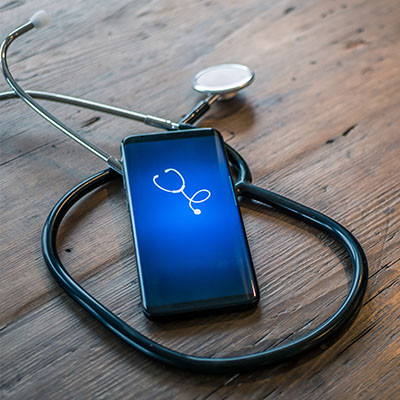FRS Pros Blog
Tip of the Week: Navigating Telehealth
One of the fastest-growing services in healthcare is telehealth. If you aren’t familiar with this concept, it is basically a virtual meeting designed to provide faster and more direct healthcare consultations and stabilize the ever-rising costs of healthcare. With health information being one of the most attractive to hackers, it is important to be mindful to do everything you can to protect your data. Today, we will go through four tips to help you successfully navigate the risks inherent with telehealth.
Use Strong Passwords
Most likely, any telehealth will require users to set up an account and password. Just like any other time you need to do so, it is important to develop unique and complex passwords. You will want to create a password that would be hard to predict, but easy to remember. One tip is to use a passphrase with at least three words that don’t have any correlation to one another. You can also use a varying amount of upper and lower case letters, symbols, and numbers to ensure that your password is unique and strong. Also, you will want to set up multi-factor authentication on your account if it is available. This method provides an extra layer of security.
Use a Virtual Private Network
One way to ensure that your virtual telehealth meeting with your physician or counselor is secure is to utilize a VPN. You will definitely want to use a VPN that you pay for and is reputable. The VPN creates an encrypted pathway to keep all information private and anonymous. You are basically setting up a direct connection to your health provider as any transmitted messages are extremely difficult to collect.
Make Sure You Protect Your Privacy
In an attempt to protect your online privacy when doing telehealth meetings, you are going to want to make sure that you conduct your meetings in private. Many people will do theirs in their personal office space or their bedroom to protect the private connection they have with their doctor. Obviously, you won’t want to pick a public place to conduct a private meeting with your doctor, but even some conversations you think are private can be overheard by the wrong people. Remember, healthcare is a private matter and even though you may be on a laptop talking to your doctor, you should be mindful of your surroundings when on a telehealth call.
Use Security Software
One of the best ways to protect yourself on Internet-connected devices is to have security software installed. This is because these tools are designed to help any user do a better job at protecting their device and their data. This includes spam filtering, anti-malware and antivirus software; as well as firewalls designed to stop potential threats. This doesn’t just pertain to PCs either. You will want to ensure that your smartphones and tablets you may use for meetings of this nature have digital protections installed to ensure that your health information isn’t vulnerable to theft.
What do you think? Do you use telehealth and have some advice for those who are considering giving it a try? Leave your comments below and check back soon for more cybersecurity best practices.



